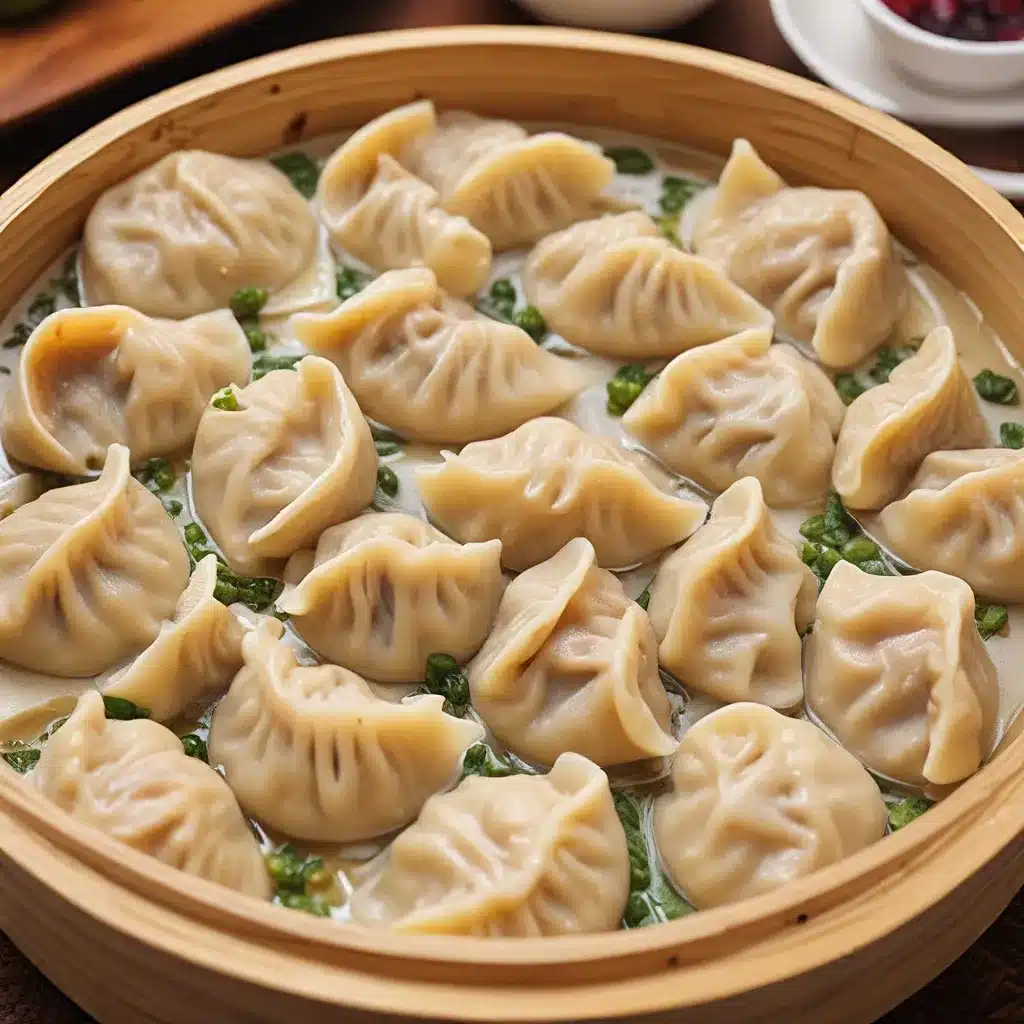
Ah, the humble dumpling – a culinary delight that unites cultures and tantalizes taste buds across the globe. As someone who’s utterly fascinated by the rich history and mouthwatering diversity of these delectable parcels, I can’t wait to take you on a flavorful journey through the world of dumplings.
From Ancient Rome to Modern Kitchens
The origins of the dumpling can be traced back centuries, with evidence of their existence in ancient Roman texts. According to the Roman cookbook Apicius, these early dumplings were made by chopping up pheasant meat, mixing it with fat, salt, and pepper, and then poaching it in seasoned water. Surprisingly, this simple yet satisfying preparation is still enjoyed in various parts of Europe today.
As the humble dumpling traveled the world, it evolved and adapted to local cuisines, taking on a wide array of shapes, fillings, and cooking methods. In Austria, for instance, stale bread is soaked in milk and combined with leftover ingredients to create dumplings, while in Germany, the beloved spaetzle is essentially a flour-based dough that’s pushed directly into boiling water.
The Dumpling’s Diverse Delights
But the true diversity of dumplings really shines when we look beyond the European continent. Take a trip to Ghana, and you’ll discover the delightful fufu, a starchy dumpling made from pounded cassava flour. And in Nepal, the beloved momo is a steamed dumpling filled with a savory mixture of meat and vegetables.
Venture further east, and you’ll stumble upon the legendary Chinese jiaozi, a stuffed dumpling with a history stretching back over 1,800 years. According to legend, these dumplings were first created by a man named Zhang Zhongjian, who returned to his village during the winter and noticed many of his neighbors suffering from frostbite. As a remedy, he cooked up a batch of mutton, chili, and healing herbs, wrapped them in dough, and handed them out – a gesture that not only soothed the aches of his fellow villagers but also kickstarted a culinary tradition that endures to this day.
Crossing the Atlantic, we find the empanada, a beloved Latin American dumpling that can be filled with a variety of savory ingredients, from spiced ground beef to roasted vegetables. And in Brazil, the empanada’s close cousin, the pastel, is a fried, crescent-shaped pastry that’s often stuffed with cheese or meat.
Dumplings as a Universal Language
What fascinates me most about dumplings is their ability to transcend cultural boundaries and bring people together. Whether you’re enjoying a plate of juicy pork-filled dumplings in a bustling Chinese restaurant or savoring the flaky crust and mouthwatering fillings of an empanada in a cozy Latin American eatery, these delightful delicacies have a way of forging connections and sparking conversations.
It’s a testament to the universal appeal of dumplings that they can be found in the culinary traditions of so many diverse cultures. From the hearty, starchy fufu of Ghana to the delicate, pleated jiaozi of China, each iteration of the dumpling reflects the unique flavors, ingredients, and gastronomic heritage of its place of origin.
The Ongoing Dumpling Evolution
But the story of dumplings doesn’t end there. As culinary trends and dietary preferences continue to evolve, so too do the ways in which we enjoy these beloved parcels. Vegan and vegetarian dumplings are gaining popularity, with fillings like seasoned tofu, mushrooms, and fresh herbs. And innovative chefs are constantly pushing the boundaries, experimenting with fusion flavors and creative presentations that breathe new life into this age-old dish.
So, the next time you dive into a steaming plate of dumplings, I encourage you to savor not just the flavors, but the rich cultural tapestry that each bite represents. Who knows what delightful dumpling discoveries await us in the years to come? The possibilities are as endless as the culinary ingenuity of the human spirit.

